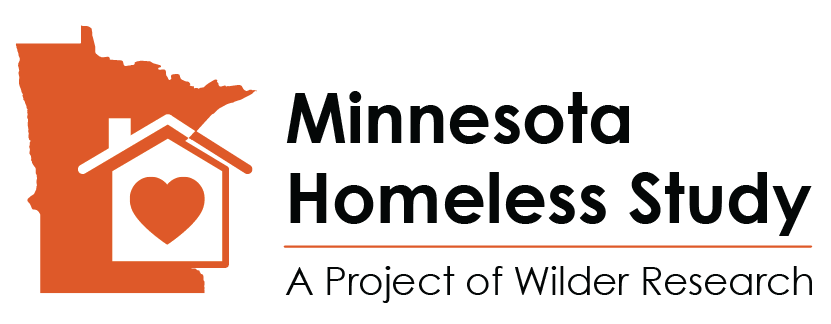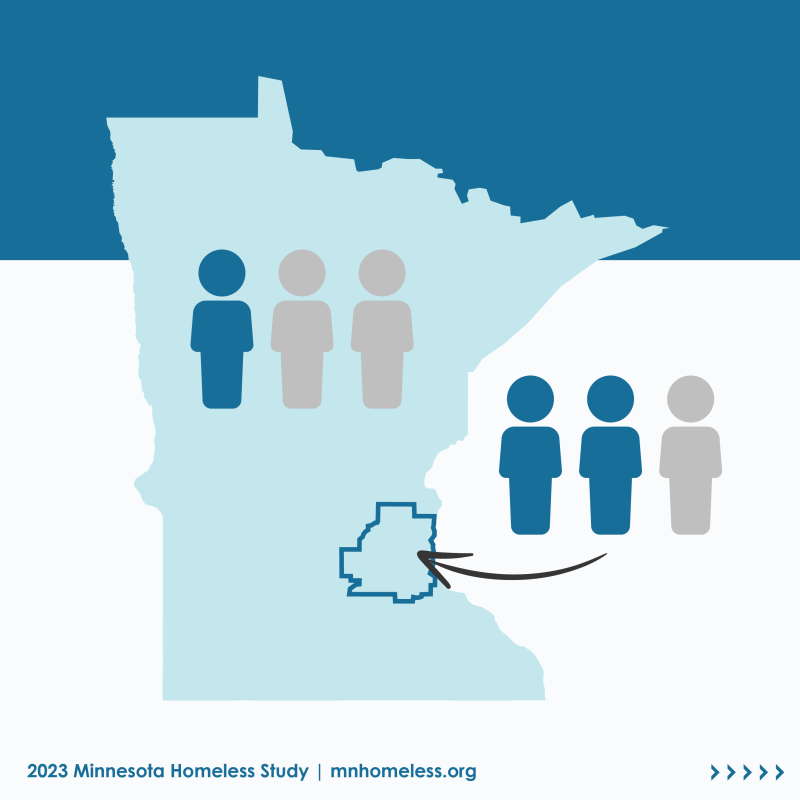Interview data from the 2023 Minnesota Homeless Study show how homelessness differs between the Twin Cities metropolitan area and greater Minnesota.
Key findings
- There is an alarming overrepresentation of Native American, Black, and Hispanic/Latino people experiencing homelessness in both the Twin Cities metro and greater Minnesota.
- Across the state, a concerning number of people are spending most of their time unsheltered. People who are homeless in greater Minnesota are more precariously sheltered, spending more time doubled up, more often moving from place to place for shelter, and experiencing more repeat episodes of homelessness.
- While more people experience homelessness in the Twin Cities metro, those who are homeless in greater Minnesota have higher rates of complex challenges that perpetuate the cycle of homelessness, including trauma, violence, and significant health issues.
- Lack of affordable housing for very low-income people remains a top challenge to finding housing, both in greater Minnesota and the Twin Cities metro.
Download the Issue Brief
This brief is one in a series that will examine interview data from the 2023 Minnesota Homeless Study. Each report will explore a specific aspect of homelessness and provide detailed data that can be used to inform services, interventions, and policies across our state.




